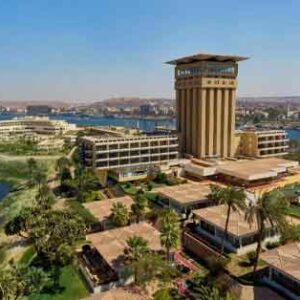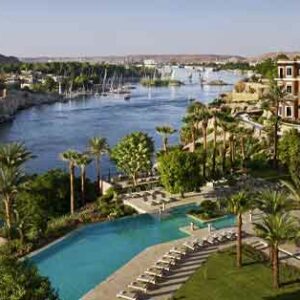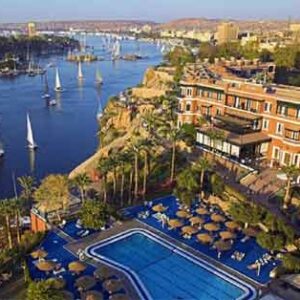The hidden treasures of Aswan
If you want to speak about a city in Egypt that has its own type of magic and allure, then you are surely speaking about Aswan! This marvelous city where the wide banks of the Nile meet the ancient history of Egypt.
The Pharaoh recognized the significant importance of Aswan as the Southern entrance to Egypt and the link towards Africa. This was why they constructed many temples and other establishments.
Several tourists who visit Aswan commonly explore the main highlight of Aswan, including the High Dam, the Unfinished Obelisk, and the Philae Temple. Nevertheless, there are several magnificent places in Aswan that are definitely worth visiting.
The Nubian Museum
The little-visited Nubia Museum, opposite Basma Hotel, is a treat, a showcase of the history, art and culture of Nubia. Established in 1997 in cooperation with UNESCO, the museum is a reminder of what was lost beneath Lake Nasser. Exhibits are beautifully displayed in huge halls, where clearly written explanations take you from 4500 BC through to the present day.
The exhibits start with prehistoric artefacts and objects from the Kingdom of Kush and Meroe. Coptic and Islamic art displays lead to a description of the massive UNESCO project to move Nubia’s most important historic monuments away from the rising waters of Lake Nasser, following the building of the Aswan High Dam.
Among the museum highlights are 6000-year-old painted pottery bowls and an impressive quartzite statue of a 25th-dynasty priest of Amun in Thebes with distinct Kushite (Upper Nubian) features. The stunning horse armor found in tombs from the Ballana period (5th to 7th centuries BC) shows the sophistication of artisanship during this brief ascendancy. A fascinating display traces the development of irrigation along the Nile, from the earliest attempts to control the flow of the river, right up to the building of the old Aswan Dam. A model of a Nubian house, complete with old furniture and mannequins wearing traditional silver jewellery, attempts to portray the folk culture of modern Nubia.
Kitchener’s Island
One of the most distinctive places in Aswan is Kitchener’s Island or Botanical Island, which represents heaven on earth for those who are fond of plants and flowers.
The island took its name after Lord Kitchener, who lived in Aswan at the beginning of the 20th century. It was he who was able to transform this simple rather small island into Kitchener rapidly transformed the small 750 meters square into an exotic garden with various plants and flowers brought from all over the globe.
Today, many Egyptians and tourists who visit Egypt explore Kitchener’s Island to enjoy admiring rare plants, trees, and flowers. Additionally, Kitchener’s Island is a famous spot to enjoy a comfortable afternoon in the most amazing ambience and charm.
The Mausoleum of Aga Khan
The Mausoleum of Aga Khan is one of the famous landmarks of Aswan due to its strategic location overlooking the river Nile.
This mausoleum belongs to the former Shah of Iran in 1885. Factually speaking, he used to spend some of his winter vacation in Aswan, near the location of the mausoleum today. Due to his wish, he was buried in this distinctive mausoleum in Aswan in 1957.
His faithful wife, Begum Om Habibeh Aga Khan, who ordered the construction of this mausoleum used to put flowers near her shrine every day. The bad news is that the mausoleum is no longer open for public visit. However, tourists can admire its greatness and unique architecture from outside, or riding a Felucca in Aswan.
The Monastery of Saint Simone
Constructed in the 7th century AD, the desert monastery of Saint Simone is situated on the West Bank of the River Nile in Aswan. This monastery was the house for a large community consisting of around 300 monks. However, it was all abandoned around the 12th century after a number of attacks by the famous Arabian army leader, Saladin El Ayoub.
Since the monastery was actually built as a fortress where the Coptic monks used to resort to, although most of the inner sections of the Monastery of Saint Simone are ruined, the fortified walls are still imposing in the middle of the desert.
Frescoes of Apostles are still apparent in the roofless basilica of the Monastery of Saint Simone. Guests can visit the complex in the afternoon to admire the old Egyptian Coptic art and to enjoy magnificent views of the desert in the sunset time.
The Tomb of the Nobles
Situated to the West of Kitchener’s Island, the hills on the West bank of the River Nile in Aswan are dominated with the rock hewn tombs of the nobles.
This historical site dates back to the Old and Middle Kingdoms of the Pharaonic era in Egypt and many of the tombs have some rich wall paintings and decorations demonstrating the talents and the skills of the ancient Egyptian workers, architects, and artists.
The largest and the finest preserved among the Tombs of the Nobles of Aswan is Sarenput II; the governor of Southern Egypt during the ruling period of the 12th dynasty.
There is also the tomb of Mekhu; a noble who belonged to the period of the 6th dynasty who was murdered during a military campaign in Nubia. The tomb has some wonderful paintings of the owner of the tomb and his son in funerary and family scenes displaying the great grief of the family after his death.
The Tomb of Sarenput I, the guardian of Southern Egypt during the reign of the 12th dynasty has fascinating decorations and wall paintings of the prince enjoying the company of his dog on hunting trips.
The Aswan Museum
Located near the Southern edge of the Elephantine Island, the Aswan Museum displays a large collection of items that were found in and around the city of Aswan and in the Elephantine Island in particular.
Labeled in a wonderful chronological sequence, the displays of the Aswan Museum range from prehistoric primitive items to Greco Roman mummies and coffins.













